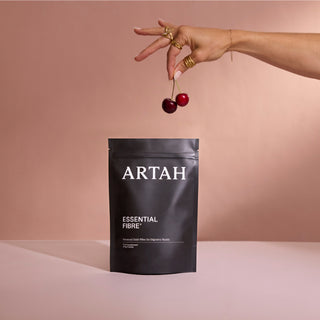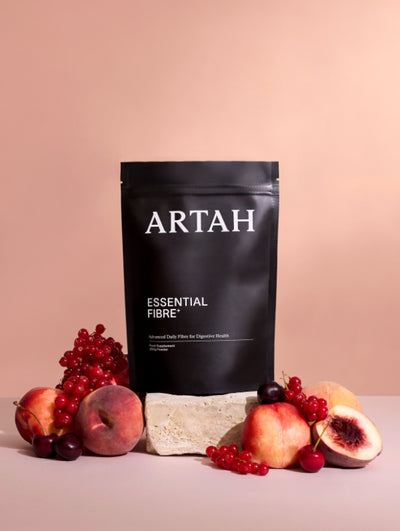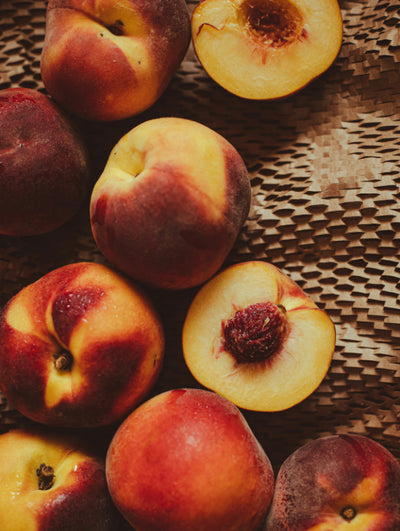Daily Rituals to Stimulate Metabolism
It’s that time of year. Suddenly, the holiday season is upon us, meaning more parties, more indulgence, and less time for our usual wellness rituals. Here’s the good news, there are some tried and tested ways to stimulate your metabolism that will help you glide through the holidays and keep you feeling fresh and festive.
HIIT - the “Afterburn” Isn’t a Myth
High-Intensity Interval Training (HIIT) is not just efficient when it comes to building your fitness; it also gears up your metabolism for hours (and possibly up to 24 hours) after you’ve stopped exercising. This post-exercise metabolic boost is due to a phenomenon called Excess Post-Exercise Oxygen Consumption (EPOC), also known as the “afterburn effect.”
What is the science saying:
-
One study comparing HIIT to moderate continuous training found significantly greater EPOC, along with higher lipid (fat) oxidation, after HIIT. (1)
-
Another trial in people with obesity showed that HIIT produced greater energy expenditure and fat burn in the 30 minutes after exercise, compared to matched moderate-intensity exercise. (2)
This means you can still fire up your metabolism on a tight schedule. Carve out 10–20 minutes in your morning routine for a quick HIIT workout. Even a short session (sprints, kettlebell swings, burpees) can generate a strong EPOC response. Pairing this with strength or circuit-style training amplifies the effect.
Protein First Thing in the Morning
You’ve heard it before, but starting your day with a protein-rich breakfast is more than just satiating, it actively stimulates metabolism. Protein has a high thermic effect, meaning it takes more energy to digest and metabolise than fats or carbohydrates. (3) A protein-rich meal helps stabilise blood sugar, reduce insulin spikes, and support lean muscle mass, all of which are beneficial for resting metabolic rate.
What is the science saying:
-
In women who habitually skip breakfast, a high-protein breakfast (vs. a carb-heavy one) increased the thermic effect of food (TEF) by ~29% after just a week. (4)
-
For people with type 2 diabetes, a protein-rich breakfast reduced post-meal blood glucose spikes and produced a more favourable “second-meal effect” (improved insulin responses later). (5)
Make your first meal of the day protein-forward: eggs + greens, a high-protein smoothie, Greek yogurt with nuts, or plant-based protein sources (tofu, tempeh). Aim for 20–30g of protein.
Stay Active Throughout the Day to Boost NEAT
While proper workouts are powerful, NEAT, (Non-Exercise Activity Thermogenesis) the small, consistent movements you do day to day might be one of the biggest untapped levers for increasing your metabolism. A structured 30–60 minute workout can significantly increase metabolic rate, but if you’re then sedentary all day, metabolic activity drops sharply.
What is the science saying:
-
Studies show that breaking up sedentary time with even light movement (like standing, walking slowly, stretching) increases metabolic rate repeatedly throughout the day. (6)
-
Standing or walking for just 2 minutes every 20 minutes significantly improves post-meal glucose and insulin responses, a sign that metabolism is being stimulated consistently. (6)
Set a timer to stand, stretch, or take a quick walk every hour. Choose the stairs over the lift whenever you can. Turn phone calls into walking meetings, and weave in simple desk-friendly movements - calf raises, chair squats, shoulder rolls, gentle twists. None of these actions feel dramatic in the moment, but together they create a powerful cumulative effect. Over time, these micro-bursts of movement raise your daily NEAT, helping you maintain a more metabolically active baseline.
Increase Your Fibre intake
If protein is the queen of satiety, fibre is king. A diet high in fibre is the best way to naturally manage appetite, energy intake, and make your blood sugar work for you. Whilst fibre itself doesn’t boost your metabolism, it does feed that beneficial bacteria that do.
What the science is saying:
-
Studies have shown that viscous fibres (like PHGG, pectins, and β-glucans) can increase satiety by 59% and lead to a reduction in energy intake 69% of the time. (10)
-
High fibre intake is associated with a higher bacteriodetes to Firmicutes ratio in the microbiome. A higher ratio of Firmicutes to Bacteroidetes has been repeatedly associated with increased weight gain and fat storage.
Add Metabolism-Boosting Foods
While no single “magic bullet” food will wildly transform your metabolism, certain foods and spices do have modest but measurable thermogenic and metabolic-regulating effects. When layered with other metabolic habits, they can contribute meaningfully to your energy balance.
Green Tea and Matcha contain Catechins, which may inhibit the enzyme that breaks down noradrenaline, which keeps sympathetic nervous activity and thermogenesis elevated. A systematic review of 15 studies (499 participants) found that green tea catechin supplementation (especially epigallocatechin gallate, or EGCG) modestly influenced metabolic parameters such as the respiratory quotient (RQ), suggesting increased fat oxidation. (7)
Incorporating mild capsaicin (through chilli, cayenne, or capsinoid supplements) may modestly boost metabolic rate, especially by increasing fat oxidation and supporting energy expenditure during calorie deficit. In a crossover trial, a lunch containing capsaicin increased GLP-1 (a satiety hormone) levels and tended to lower ghrelin (hunger hormone) compared to a control meal. (8)
When it comes to ginger, cinnamon and turmeric, the human evidence for these spices is less robust than for green tea and capsaicin, mechanistic and preliminary clinical data suggest real metabolic potential. A narrative review on food thermogenesis highlights that ginger (gingerol), cinnamon, and turmeric (curcumin) all contain bioactive compounds that may enhance thermogenesis, improve insulin sensitivity, and support metabolism. (9)
Our bestseller Metabolic Fix features green tea extract, cinnamon and other metabolic heroes such as Berberine and Inositol.
REFERENCES
-
Faleiro V, Gurgel AV, Guimarães TT, Figueiredo TC, Teixeira FG, Jotta B, Monteiro ER, Meirelles AG, Caldas CCA, de Almeida MT, Castiglione RC, Marques-Neto SR. Isocaloric High-Intensity Interval and Circuit Training Increases Excess Post-Exercise Oxygen Consumption and Lipid Oxidation Compared to Moderate-Intensity Continuous Training. Sports (Basel). 2025 Oct 6;13(10):355. doi: 10.3390/sports13100355. PMID: 41150490; PMCID: PMC12567725.
-
Jiang L, Zhang Y, Wang Z, Wang Y. Acute interval running induces greater excess post-exercise oxygen consumption and lipid oxidation than isocaloric continuous running in men with obesity. Sci Rep. 2024 Apr22;14(1):9178. doi: 10.1038/s41598-024-59893-9. PMID: 38649759; PMCID: PMC11035584.
-
Neumann BL, Dunn A, Johnson D, Adams JD, Baum JI. Breakfast Macronutrient Composition Influences Thermic Effect of Feeding and Fat Oxidation in Young Women Who Habitually Skip Breakfast. Nutrients. 2016 Aug 10;8(8):490. doi: 10.3390/nu8080490. PMID: 27517958; PMCID: PMC4997403.
-
Park YM, Heden TD, Liu Y, Nyhoff LM, Thyfault JP, Leidy HJ, Kanaley JA. A high-protein breakfast induces greater insulin and glucose-dependent insulinotropic peptide responses to a subsequent lunch meal in individuals with type 2 diabetes. J Nutr. 2015 Mar;145(3):452-8. doi: 10.3945/jn.114.202549. Epub 2014 Dec 24. PMID: 25733459; PMCID: PMC6619673.
-
Dunstan DW, Kingwell BA, Larsen R, Healy GN, Cerin E, Hamilton MT, Shaw JE, Bertovic DA, Zimmet PZ, Salmon J, Owen N. Breaking up prolonged sitting reduces postprandial glucose and insulin responses. Diabetes Care. 2012 May;35(5):976-83. doi: 10.2337/dc11-1931. Epub 2012 Feb 28. PMID: 22374636; PMCID: PMC3329818.
-
Rondanelli M, Riva A, Petrangolini G, Allegrini P, Perna S, Faliva MA, Peroni G, Naso M, Nichetti M, Perdoni F, Gasparri C. Effect of Acute and Chronic Dietary Supplementation with Green Tea Catechins on Resting Metabolic Rate, Energy Expenditure and Respiratory Quotient: A Systematic Review. Nutrients. 2021 Feb 17;13(2):644. doi: 10.3390/nu13020644. PMID: 33671139; PMCID: PMC7922336.
-
Smeets AJ, Westerterp-Plantenga MS. The acute effects of a lunch containing capsaicin on energy and substrate utilisation, hormones, and satiety. Eur J Nutr. 2009 Jun;48(4):229-34. doi: 10.1007/s00394-009-0006-1. Epub 2009 Feb 24. PMID: 19238310; PMCID: PMC2695870.
-
INTERNATIONAL JOURNAL OF ALLIED HEALTH SCIENCES, 7(5), 455-463 458


















































